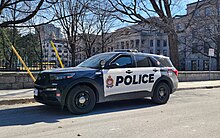
The Royal Canadian Mounted Police is the national police service of Canada. The RCMP is an agency of the Government of Canada; it also delivers police services under contract to 11 provinces and territories, over 150 municipalities, and 600 Indigenous communities. The RCMP is commonly known as the Mounties in English.

The Ontario Provincial Police (OPP) is the provincial police service of Ontario, Canada. The OPP patrols provincial highways and waterways; protects provincial government buildings and officials, with the exception of the legislative precinct; patrols unincorporated areas in northern Ontario; provides training, operational support, and funding to some Indigenous police forces; and investigates complex or multijurisdictional crimes across the province. The OPP also has a number of local mandates through contracts with municipal governments and First Nations, where it acts as the local police force and provides front-line services.
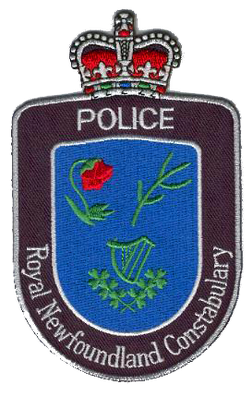
The Royal Newfoundland Constabulary (RNC) is the provincial police service for the province of Newfoundland and Labrador.

The Canadian Forces Military Police provide police, security and operational support services to the Canadian Armed Forces (CAF) and the Department of National Defence (DND) worldwide.

The City of Ottawa is the corporate entity of municipal government in Ottawa, Ontario, Canada. The corporation is responsible for provision of services to the public as well as enforcement of municipal by-laws. It is overseen by the City Manager, and responsible to the Mayor of Ottawa and City Council.

The Peel Regional Police (PRP) provides policing services for Peel Region in Ontario, Canada. It is the second largest municipal police service in Ontario after the Toronto Police Service and third largest municipal force in Canada behind those of Toronto and Montreal, with 2,200 uniformed members and close to 875 support staff.

The York Regional Police (YRP) is the police service of the Regional Municipality of York, Ontario, Canada. YRP was formed in 1971 from the police forces maintained by the nine municipalities which amalgamated into York Region at the time. The force employs over 1,500 sworn members and 618 unsworn members as of 2015.
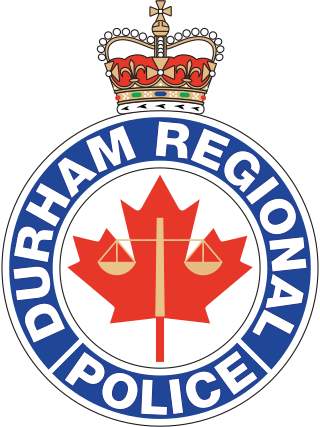
The Durham Regional Police Service (DRPS) is the police service operated by and serving the Regional Municipality of Durham, Ontario, Canada. The DRPS has a strength of over 900 sworn officers and over 300 unsworn members, and serves the following local municipalities, with a combined population of 706,200:

The Vancouver Police Department (VPD) is the police force in Vancouver, British Columbia, Canada. It is one of several police departments within the Metro Vancouver Area and is the second largest police force in the province after RCMP "E" Division.

The Halifax Regional Police (HRP) is one of a number of law enforcement agencies operating in the Halifax, Nova Scotia; the other primaries being the Royal Canadian Mounted Police and the Canadian Forces Military Police. The city also is home to a small detachment of the Canadian National Railway Police.

Indigenous police services in Canada are police forces under the control of a First Nation or Inuit government.

Law enforcement in Canada is the responsibility of police services, special constabularies, and civil law enforcement agencies, which are operated by every level of government, some private and Crown corporations, and First Nations. In contrast to the United States or Mexico, and with the exception of the Unité permanente anticorruption in Quebec and the Organized Crime Agency of British Columbia, there are no organizations dedicated exclusively to the investigation of criminal activity in Canada. Criminal investigations are instead conducted by police services, which maintain specialized criminal investigation units in addition to their mandate for emergency response and general community safety.
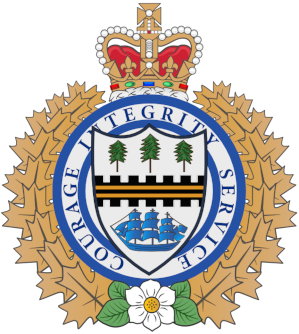
The Port Moody Police Department is the police force for the City of Port Moody, British Columbia.

The Ottawa Fire Services provides fire protection, technical rescue services, hazardous materials response, and first responder emergency medical assistance to the city of Ottawa, Ontario, Canada.
Auxiliary constables or reserve constables are unpaid citizens in Canada who volunteer their time and skills to a police force. They are uniformed, unarmed members who perform a similar role to their UK counterparts in the Special Constabulary. Their main function is to supplement the police force with additional manpower, with duties varying by appointment, geographical location and the needs of the specific detachment/department.

The Alberta Sheriffs Branch is a provincial law enforcement agency overseen by the Ministry of Public Safety and Emergency Services of the province of Alberta, Canada. Under the authority of the Peace Officer Act, Alberta Sheriffs are provincial peace officers with jurisdiction over the province of Alberta. The premier of Alberta has the authority to grant emergency police powers to all Alberta sheriffs during major emergencies within the province. The Alberta Sheriffs Branch is the largest sheriff service in Canada.
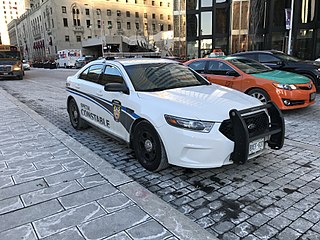
A special constable or special police constable can refer to an auxiliary or part-time law enforcement officer or a person who is granted certain (special) police powers.
Ottawa By-law and Regulatory Services is a branch of the municipal government of Ottawa, Ontario. It enforces local by-laws including parking, noise, property standards, animal control, and other areas regulated by the City of Ottawa.














